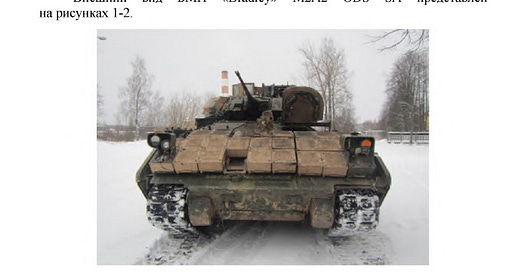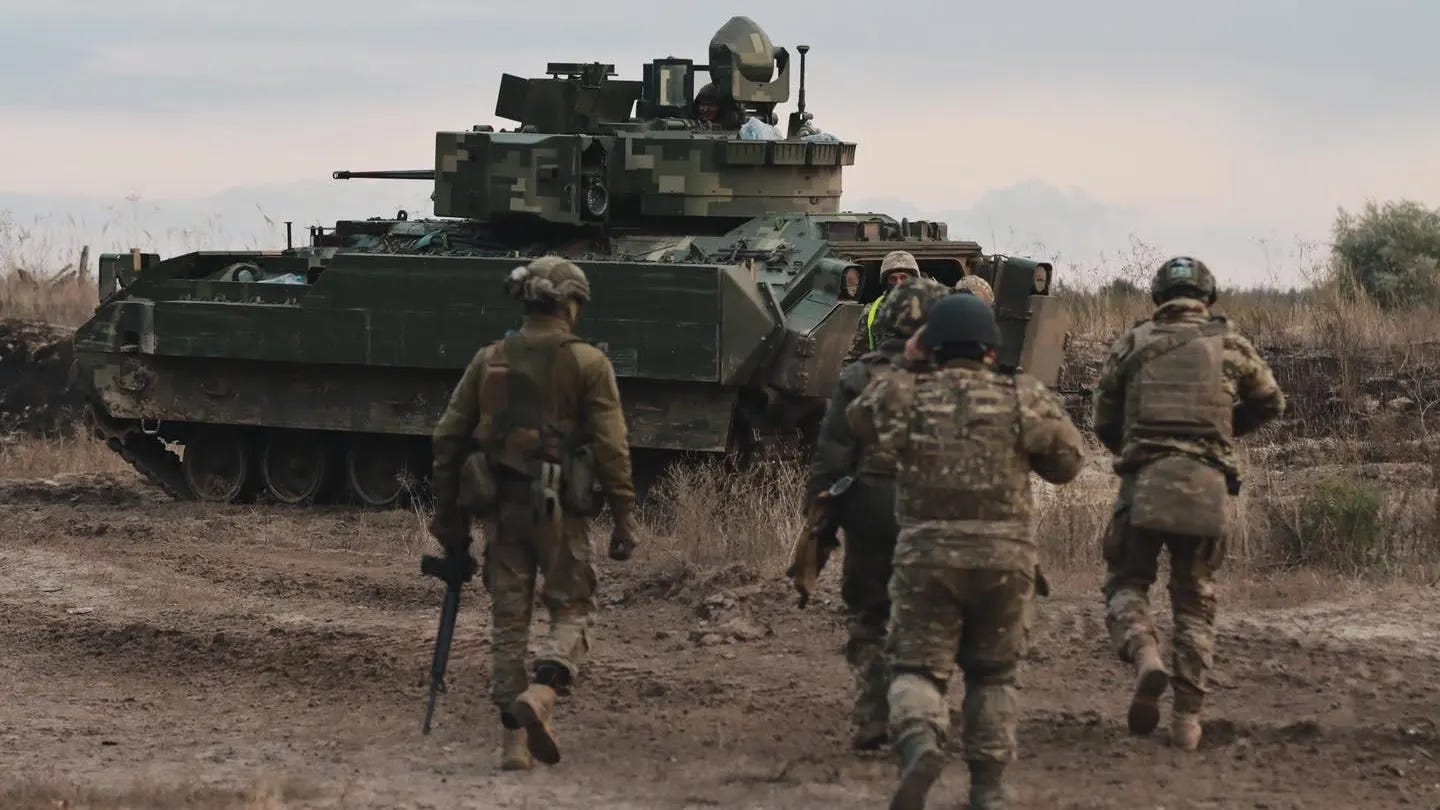The Russians Have Captured 11 Ukrainian M-2 Bradleys. Studying the Vehicles, They Were Impressed.
The American-made M-2 is more survivable and shoots more accurately than a Russian BMP-3.
Of the more than 300 M-2 Bradley infantry fighting vehicles Ukraine received from the administration of former U.S. Pres. Joe Biden, at least 11 have been damaged, immobilized and captured by Russian troops.
The first of the 33-ton, 10-person IFVs got grabbed back in November 2023. In the 17 months since then, the Kremlin has had time to study the classic American vehicle. Its conclusion: the M-2 is better than the contemporary Russian BMP-3 in almost every regard.
This should come as no surprise. “A Bradley may be hit, but the crew survives,” Ukrainian officer and Bradley trooper Mykola Melnyk said after losing a leg in mine strike in the summer of 2023. The same can’t be said of the 21-ton, nine-person BMP. Hit a BMP, Melynk said, and “the entire crew dies.”
The Russian report confirms the M-2’s superior survivability. The M-2 “surpasses the BMP-3 in terms of projectile and bullet resistance,” the analysts at the Russian 38th Research Institute concluded. “In terms of mine protection, it exceeds the BMP-3 due to two aluminum and steel sheets installed on the hull bottom, an internally mounted anti-mine polymer mat and shock-absorbing troop seats.”
Only some of the BMP-3’s autocannon rounds can reliably penetrate the M-2 armor. “The side projection provides protection against a 30-millimeter projectile from the 3UBR6 round but does not protect against a 30-millimeter projectile from the 3UBR8 round. The frontal projection provides protection against a 30-millimeter projectile from the 3UBR8 round, which exceeds the protection level of the BMP-3’s frontal projection.”
The frontal projection with [explosive reactive] armor blocks provides protection against cumulative [rocket-propelled] grenades such as PG-9VS and PG-7VL. The side projection with ERA blocks provides protection against cumulative grenades like PG-9VS but does not protect against grenades like PG-7VL.
The M-2 boasts superior firepower owing to “the accuracy of the 25-millimeter M242 automatic cannon, which is twice that of the 30-millimeter 2A42 and 2A72 automatic cannons, increasing the effective firing range. The armor-piercing capability of the 25-mm [armor-piercing, fin-stabilized discarding sabot] round, which is twice that of the 30-millimeter APS round from the 3UBR8.”
Moreover, the Bradley “surpasses the BMP-3 in operational and technical characteristics due to:
the ability to access the combat compartment from the troop compartment;
better repairability of the power unit, generator, combat compartment and cannon barrel;
reduced duration of technical maintenance for key components and assemblies due to easier access;
[and] reduced time and labor intensity for replacing key components and assemblies.”
If the M-2 has any weaknesses compared to the BMP-3, they’re in the categories of “mobility, range, off-road capability and the ability to ford water obstacles afloat.”
But the Bradley “surpasses the BMP-3 in ergonomic characteristics due to: a larger armored volume; the presence of a ramp in the troop compartment; and the absence of structural elements between the commander’s and gunner’s workstations that hinder free movement of the crew from the combat compartment to the troop compartment.”
The research institute recommended Russian designers incorporate elements of the M-2’s design in future Russian vehicles. Whether Russian industry and Kremlin procurement officials will actually heed that advice remains to be seen.
Read more:
The Ukrainian M-2 Bradley Force Has Peaked at Six Battalions
For a year or so after receiving the first surplus M-2 Bradley infantry fighting vehicles from the United States, the Ukrainian armed forces assigned the 33-ton, 10-person IFVs to just one unit, the army’s elite 47th Mechanized Brigade.







